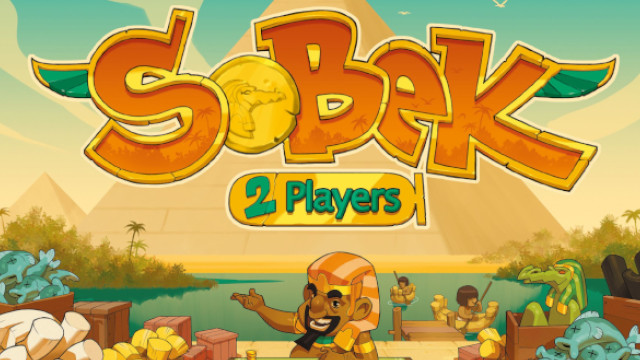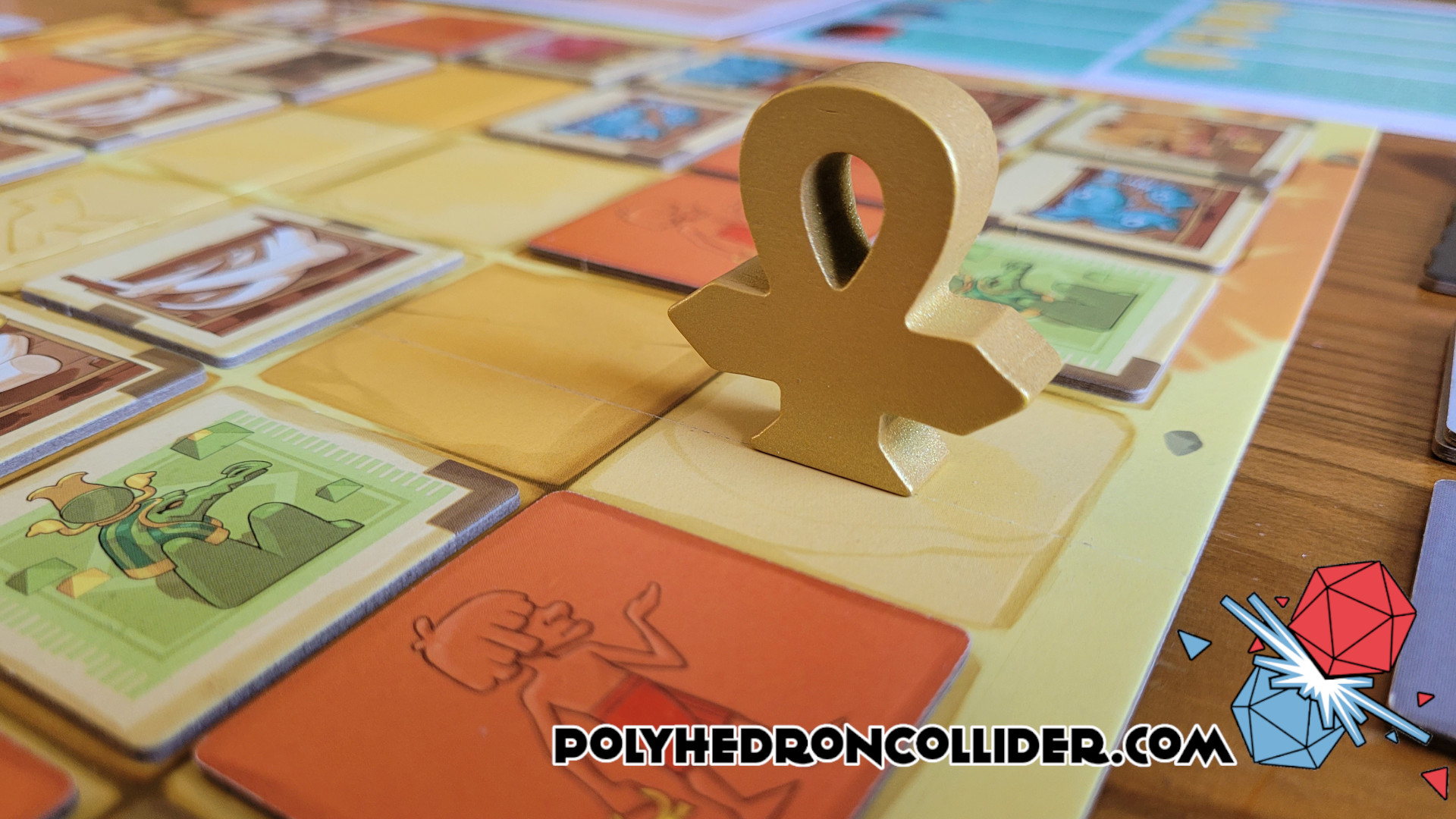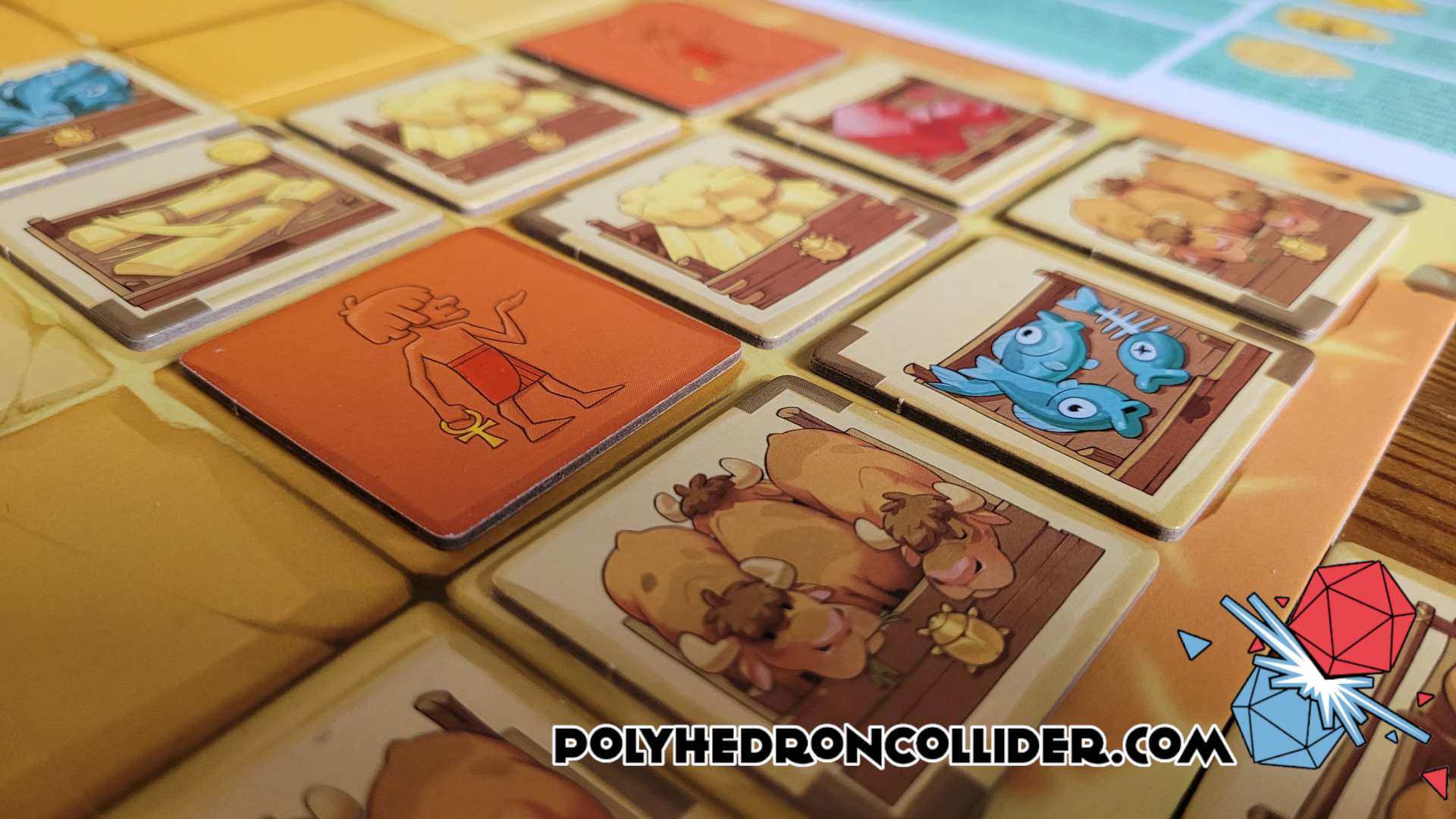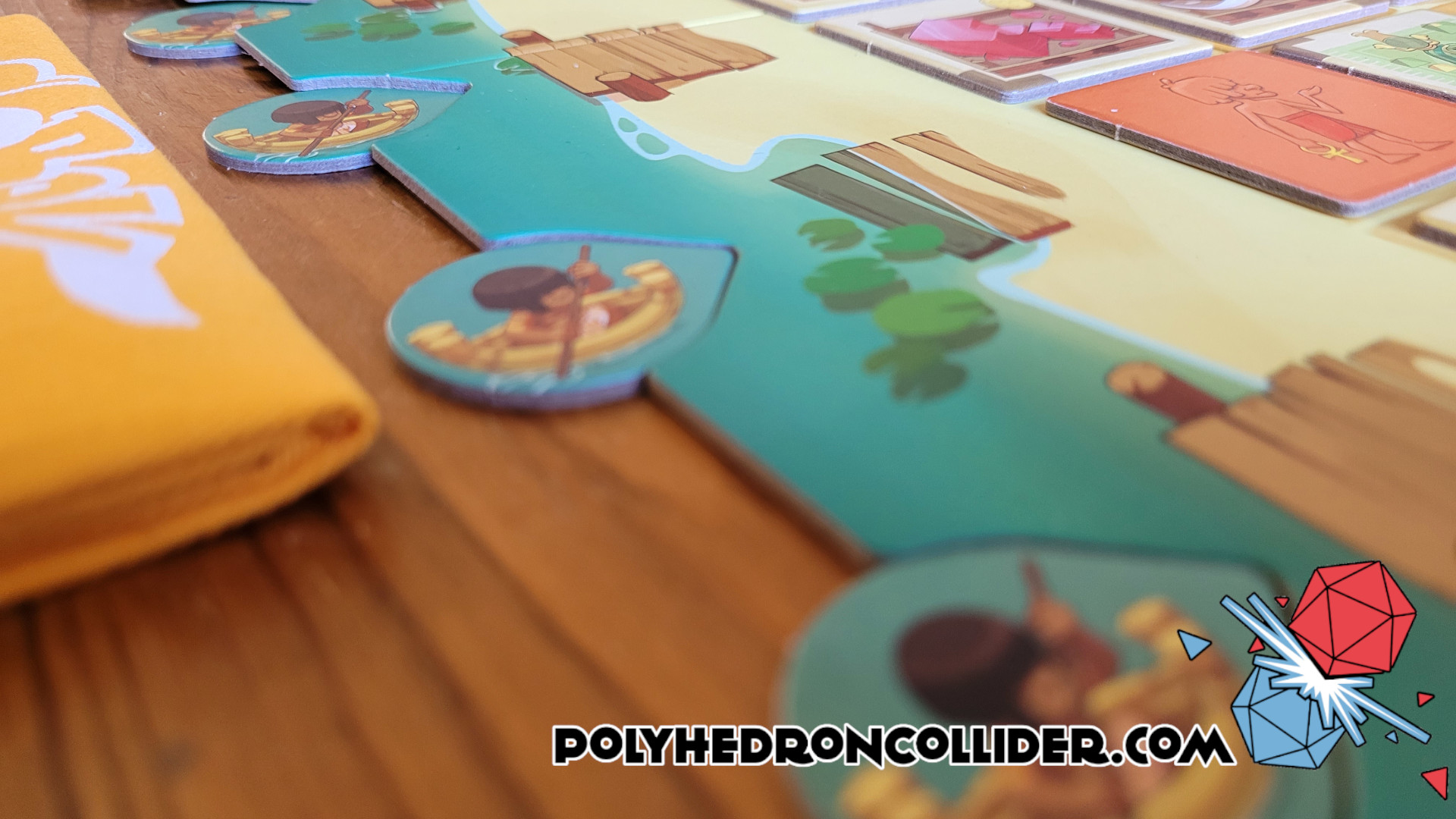This two-player market manipulation game is all about weighing what you can gain against what you are going to lose. In this game about two rival merchant guilds duking it out for dominance along the bank of the Nile players will have to try and plan, will have to make the best of a bad situation and try and get the timing of every sale just right to reign supreme.
I love two-player games. I enjoy games that directly pit one player against another, whether those games have an asymmetry, or if the scales are perfectly balanced and it all comes down to wits and a dash of luck, fundamentally, I enjoy two-player games, so, when I learned of Sobek 2 players, designed by none other than Sébastien Pauchon, who did Jaipur, and Bruno Cathala of 7 Wonders Duel fame (among many others) I decided this game was a must purchase. Thing is, now I find myself in the odd position of being unsure if I like the game, or if I’m just well, a little disappointed.
“But, Rory!” I hear you cry. “How do you not know if you like this game or not?”
Excellent question dear reader.
It’s all to do with the Ankh. This key feature of the game is the ultimate salesman, the Ankh promises control, it whispers in your ear all the possibilities that lie before you. These hunnied words lead you to believe that the choices you are making are yours, that you are optimising your action, and that your opponent will be worse off…but, that’s all bull…I think.
In Sobek 2 Players, the central market is made up of a bunch of goods tiles and a few character tiles (which are hidden and will provide the claimant with a special one-off ability). Most of your turns will be spent selecting which available tile to take. Here there are just two considerations to bear in mind. One does this good tile work with what you have already in your hand. And two, what tiles are you leaving available for your opponent in their turn?
Available tiles are those that the ‘arms’ of the Ankh are pointing to, along the horizontal, vertical or diagonal. This is determined by the small brown marks on the frame of the tile taken previously. In other words, you can only take a tile that the Ankh is pointing to, and when you take that tile you reset the Ankh to point in the direction of the tile you just took. Invariably, both you and your opponent will try and screw each other over, manipulating the Ankh to point to low-value goods or to ensure that no matter what move you reasonably take, you leave them with an optimal choice.
I say reasonable here because you don’t of course have to take the next tile in line. You can skip over as many tiles as you like, claiming any tile that the Ankh is pointing towards, but, doing so will add every tile skipped over to your corruption pile; and as the name suggests, this is a bad thing. The player with the least corruption at the end of the game gets some bonus points, they get even more bonuses the greater the difference in corruption scores.
This is where timing is key. In your turn, you have three possible actions, buy, sell, or play a character tile. Naturally, at the start of the game, the only option is to buy (collect a tile). Once you have three or more of a kind you can sell. Once you have a character, you can play that instead. Doing either of these things is always beneficial, but doing it at the right time is tricky. Ideally, you want to do this when your opponent has got you by the short and curlies, “forcing” you to take a tile you don’t want. Instead, here you sell or play a character, not only getting that benefit but also forcing your opponent to take that sub-optimal choice they had tried to put you in.
Selling tiles is how you are going to score points, it also allows you to take one of the five pirogue tokens set up at the start of the game, doing this early, or at least before your opponent, gives you a distinct advantage; knowledge is power after all. Some of these pirogue tokens (which interesting do not get refilled when one is taken) are good, and some are bad. Some are bloody terrific and one is awful. Getting in early not only gives you more choice and more information, but lets you know how quickly you want to spin through sales to prevent your opponent from collecting the good ones, and ideally, forcing them to take bad ones.
This is all very well and good, but, everything in Sobek 2 Players hinges on the placement of the Ankh. There are no bad tiles to pick up, some are just less optimal than others, but what options you leave open for your opponent feels more important to me than what I collect. This to me feels like the best way to exert control over the game and to have the most agency, but in doing so it’s more like I am preventing my opponent from playing the game rather than playing against them.
2 Player games, for me, fall into one of two buckets. On the one hand, you have thinky, tactical games that are like a battle of wits, like 7 Wonders Duel, Tao Long, or Inbetween (to name my favourites). Or, a two-player game is a much lighter and notably, a much faster affair, like Jaipur, or Santorini. Sobek 2 players doesn’t fit into either of these buckets. There isn’t enough meat on the bone, not enough agency or control for it to belong in bucket one. But, it’s too long and has a bit too much going on to belong in bucket 2. This is my issue with Sobek 2 Players.
Sobek 2 Players is a good game, but for me, it lacks the tactical heft I was frankly expecting and hoping for. It sits in that funny middle ground of not being quite engaging enough to ensure it is a mainstay on my game shelf, but equally not light and faster enough to keep on the shelf for when I just need a quick hit of cardboard. If I can get another half a dozen games out of it, then it will have more than justified its purchase (at a very reasonable price I might add) and at that point, I’ll probably have seen and experienced everything this game has to offer and it will be time to send it on down the river.






















0 comments:
Post a Comment